7. Mt. Izugatake Trail (伊豆ヶ岳)
Trail Location: Start: Shomaru station, Seibu Chichibu line
Goal: Agano station, Seibu Chichibu line
Access From Tokyo, take an express train or a limited express train on the Seibu Ikebukuro line at Ikebukuro to Hanno. From there, take the Seibu Chichibu line to Agano station. The trip takes 70 to 90 minutes.
Total Length: 13.4km
Course Time: 5hours and 55 minutes
Elevation Difference: 671m
Difficulty Rating: 3 (moderate)
* Difficulty ratings: (1)beginner, (2) easy, (3) moderate, (4) strenuous
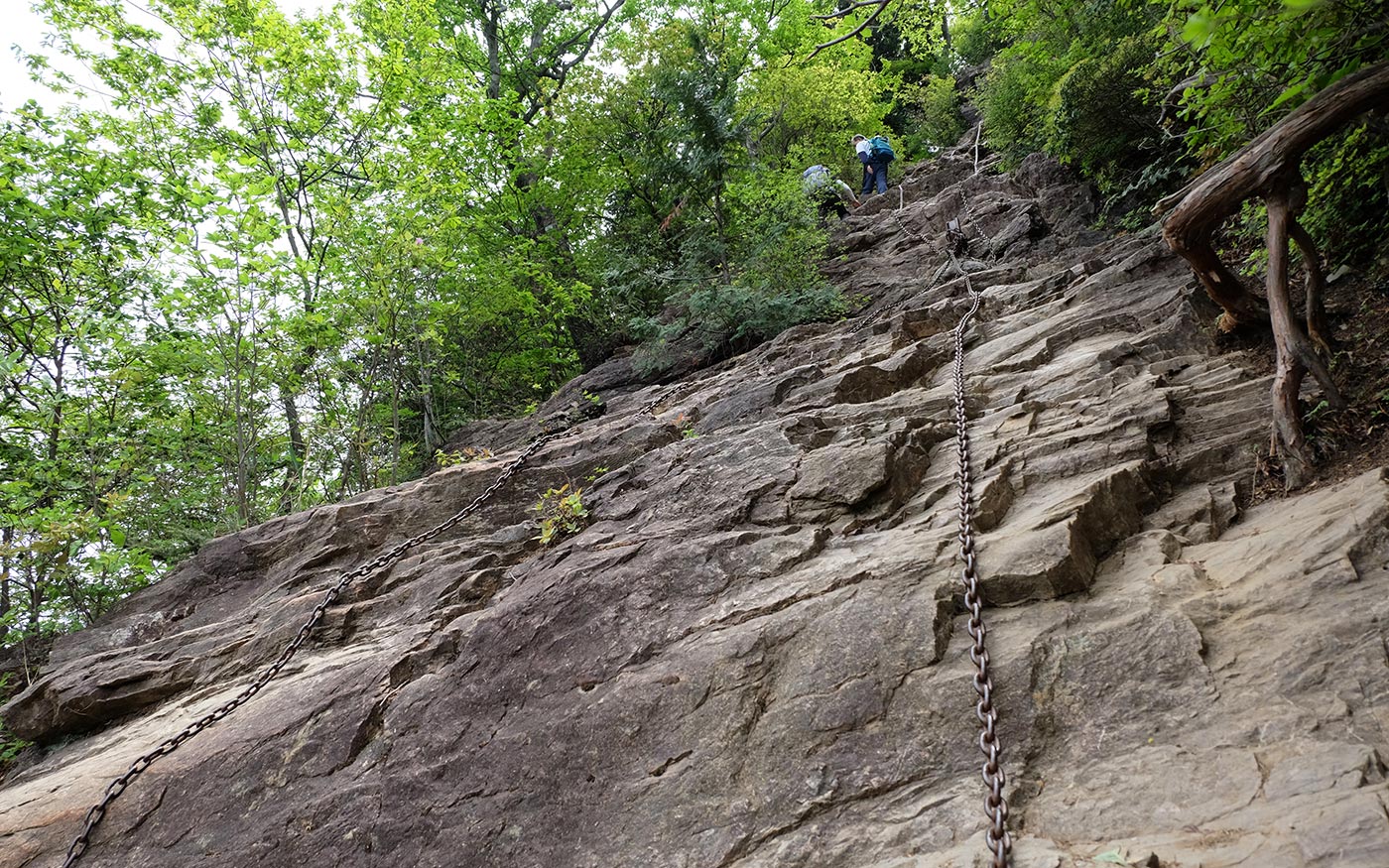
Trail Features
・This is one of the most popular trekking couses in Oku-Musashi area. Fresh green leaves will be all around Mt. Izugatake during the middle of April to the middle of May. Azalea blossoms most beautiful in the early May.
・Visiting Nenogongen Temple, a Buddhist temple established more than 1,100 years ago, is known for its giant straw sandal monument. It attracts worshippers seeking lower-body health and back and leg pain relief. You can get a talisman in the shape of a straw sandal that heals and protects your back and feet.
・On the way back to Agano station, drop by at an Udon noodle shop. Udon noodle and sweets are served in a 150-years-old traditional Japanese style house.
・Togo Park is one of the most popular autumn foliage spots in Oku-Musashi area. Autumn leaves festival is held annually on holidays around Nov. 20th.
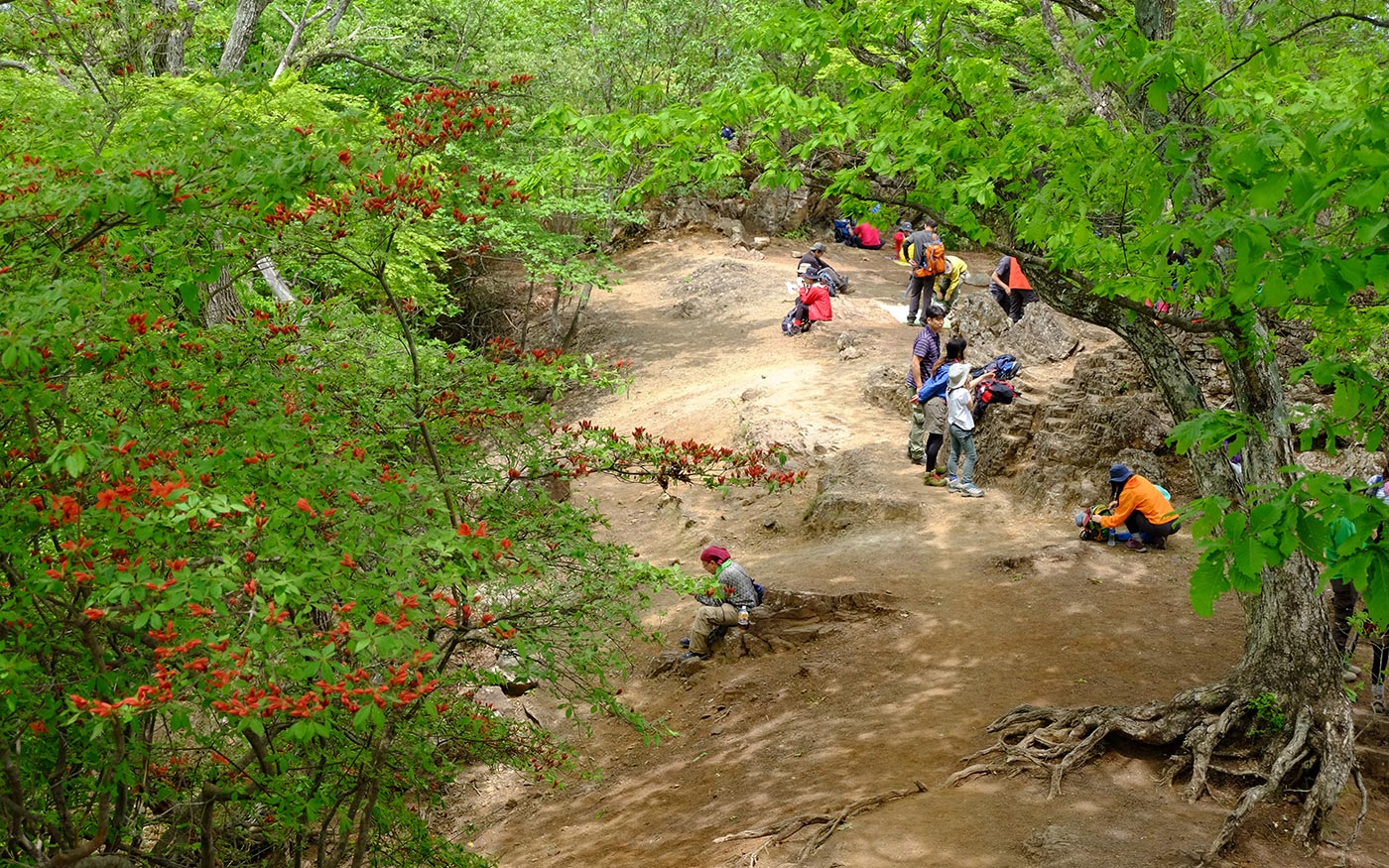
Trail Description
Mt. Izugatake, with the height of 851 meters, is one of the post popular mountains in Oku-Musashi area where many hikers enjoy trekking on holidays. The trekking route from Mt. Izugatake to Nenogongen Temple is quite popular among hikers throughout the year.
From Shomaru station, go under the train tracks and proceed the paved road along a stream for a while. Past a small village, you will find the entrance to the Shomaru pass. Fork left here and climb up the trails along streams. After short sharp uphills, you will hit the ridge leading to Gorinzan. The trail along the ridge is covered with green leaves of konara oak trees and wild cherry trees.
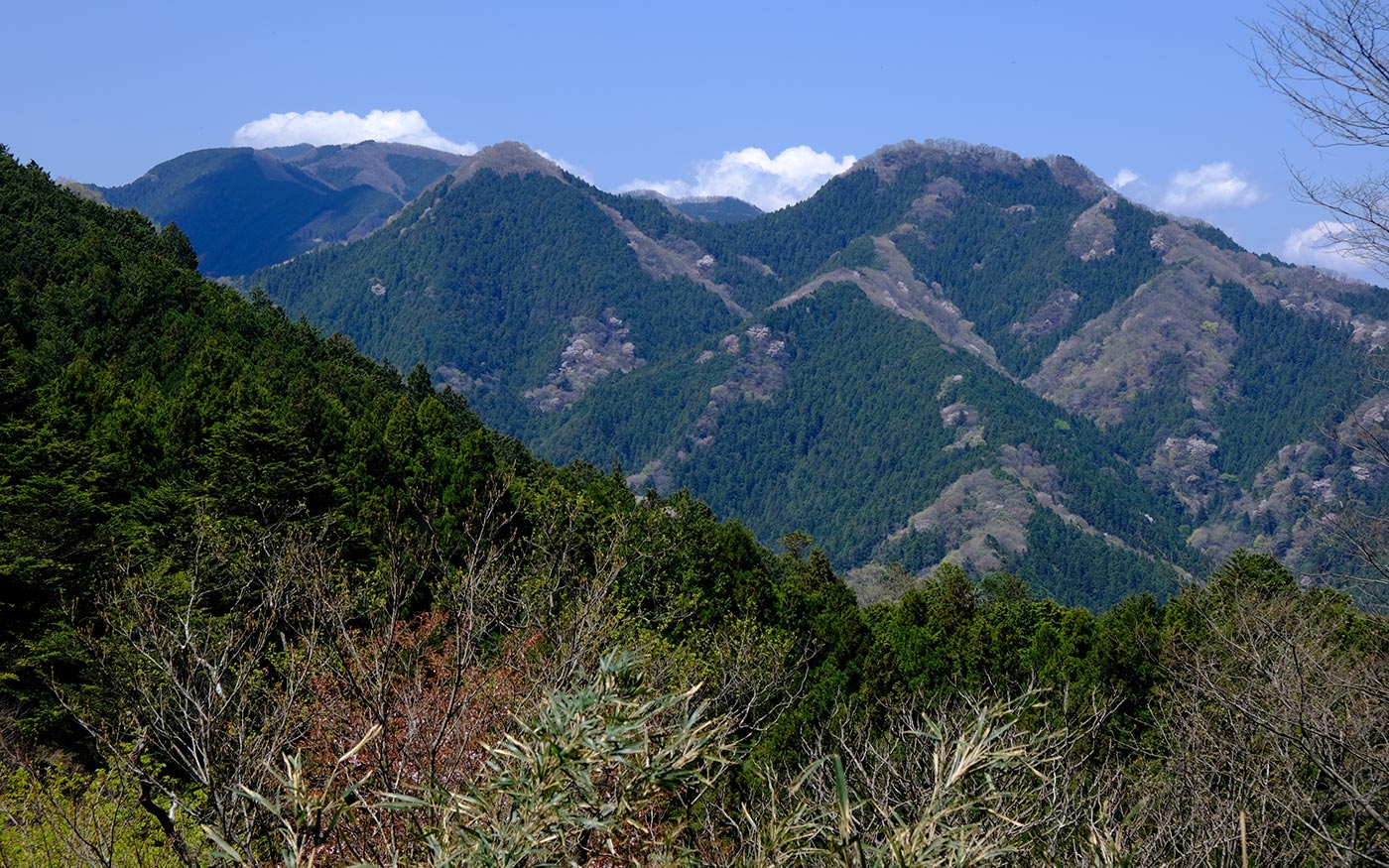
After walking for a while, you will face a 30-meter-high rock wall. The Otoko-saka (men’s slope) is a challenging clamber and requires all four limbs and the help of chains. There is also the Onna-saka (women’s slope) that skirts around the rock wall. Either way will lead you to the hilltop of Mt. Izugatake. This hilltop is a nice spot for a short break. Through the gap of surrounding trees to the west, Mt. Takekawadake and Mt. Bukosan will come into view.
From here, the trail descends to the south slope of the mountain. Be careful not to slip when you descend as the terrain is sandy and gritty. A short ascent after the col will take you to the hilltop of Komitake where you can find a couple of benches to have a break. Again, be careful as the descent from here is very steep. Once past the steep downhill, the trail becomes gentle. After passing the shrubs of Asebi Japanese Andromeda trees you will reach the hilltop of Mt. Takahatayama.
Then a 40-minutes easy descent will take you to Amamezasu Pass. Beyond this pass, the climb begins steeper again. After 50 minutes of walking the ups and downs, you will reach Nenogongen Temple. Nenogongen Temple has a torii gate, a symbol of Shinto, a black temple gate and a pair of guardian gods, symbols of Buddhism. The combination or merger of Buddhism and Shinto is one of the characteristics of religions in Japan.
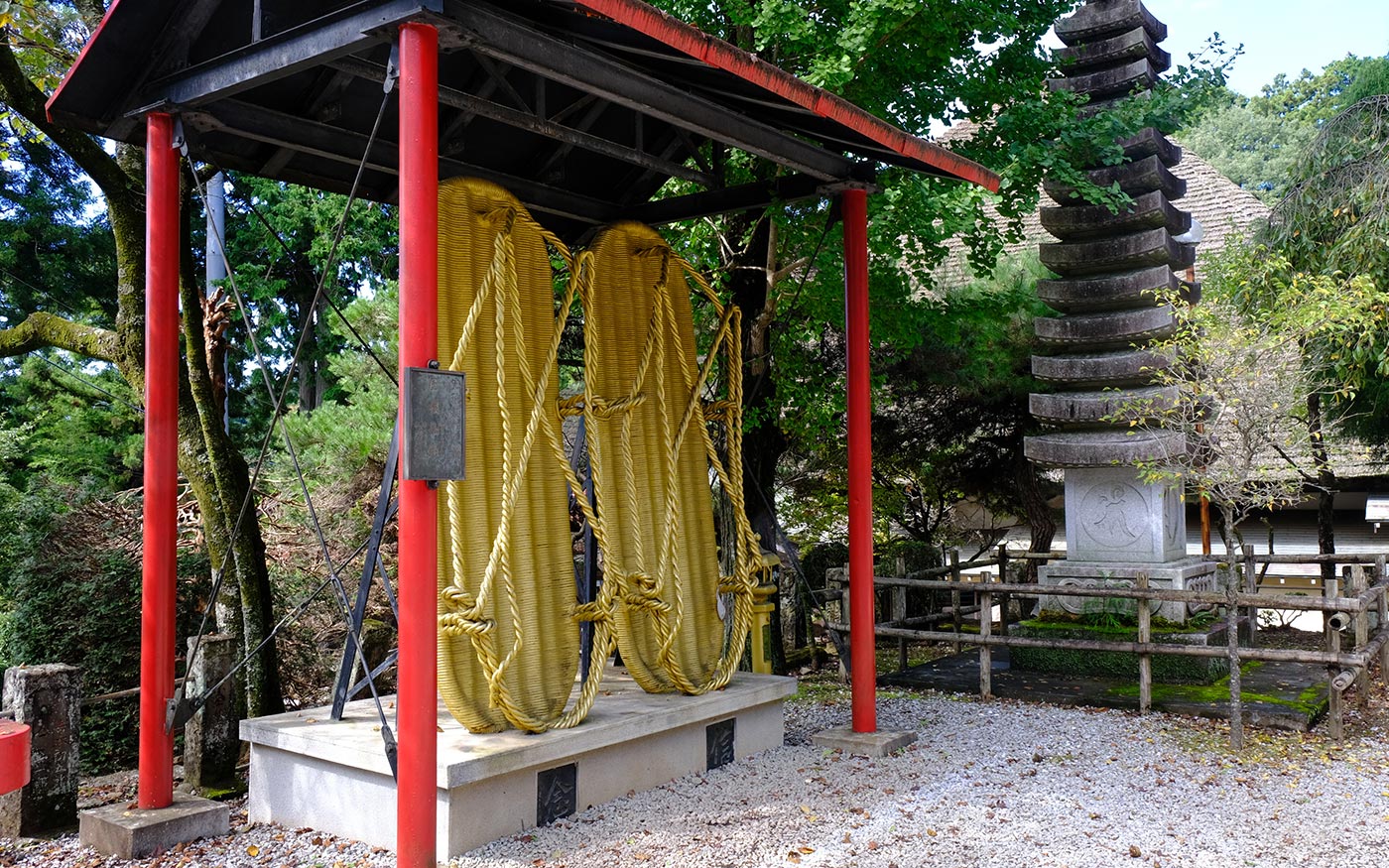

From here, proceed an easy trail for about 25 minutes until you hit a paved road. You will shortly find Asami-chaya, a famous noodle shop. The wooden building is more than 150 years old and the establishment serves tasty Udon noodles and sweets. Why not enjoy lunch or take a break in a rustic atmosphere of an old Japanese-style house.
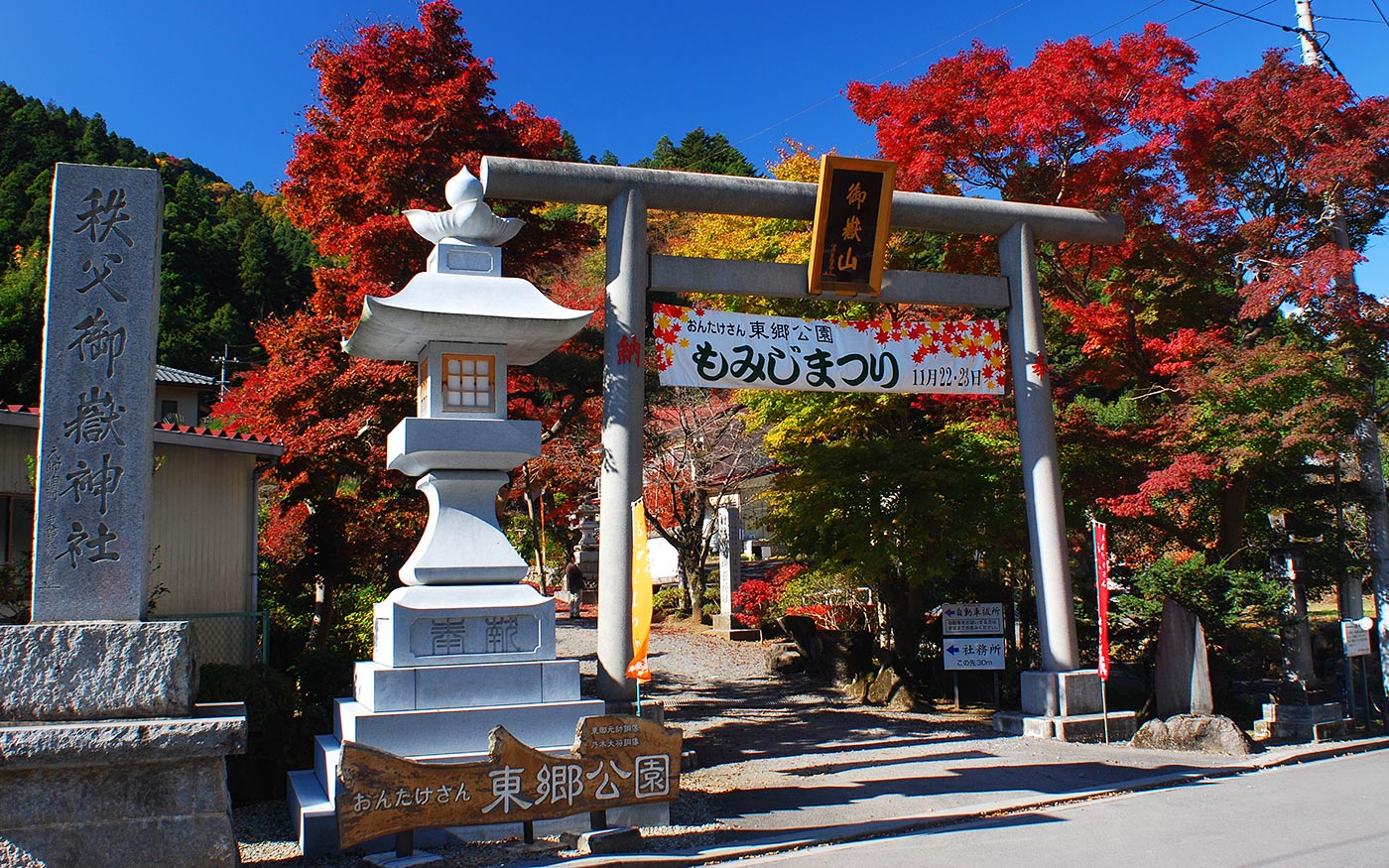

To continue on to Agano station, descend the paved road to Togo Park, one of the most popular autumn foliage spots in Oku-Musashi area. Then turn right and continue on country roads along the train tracks for a while until you will reach Agano station.
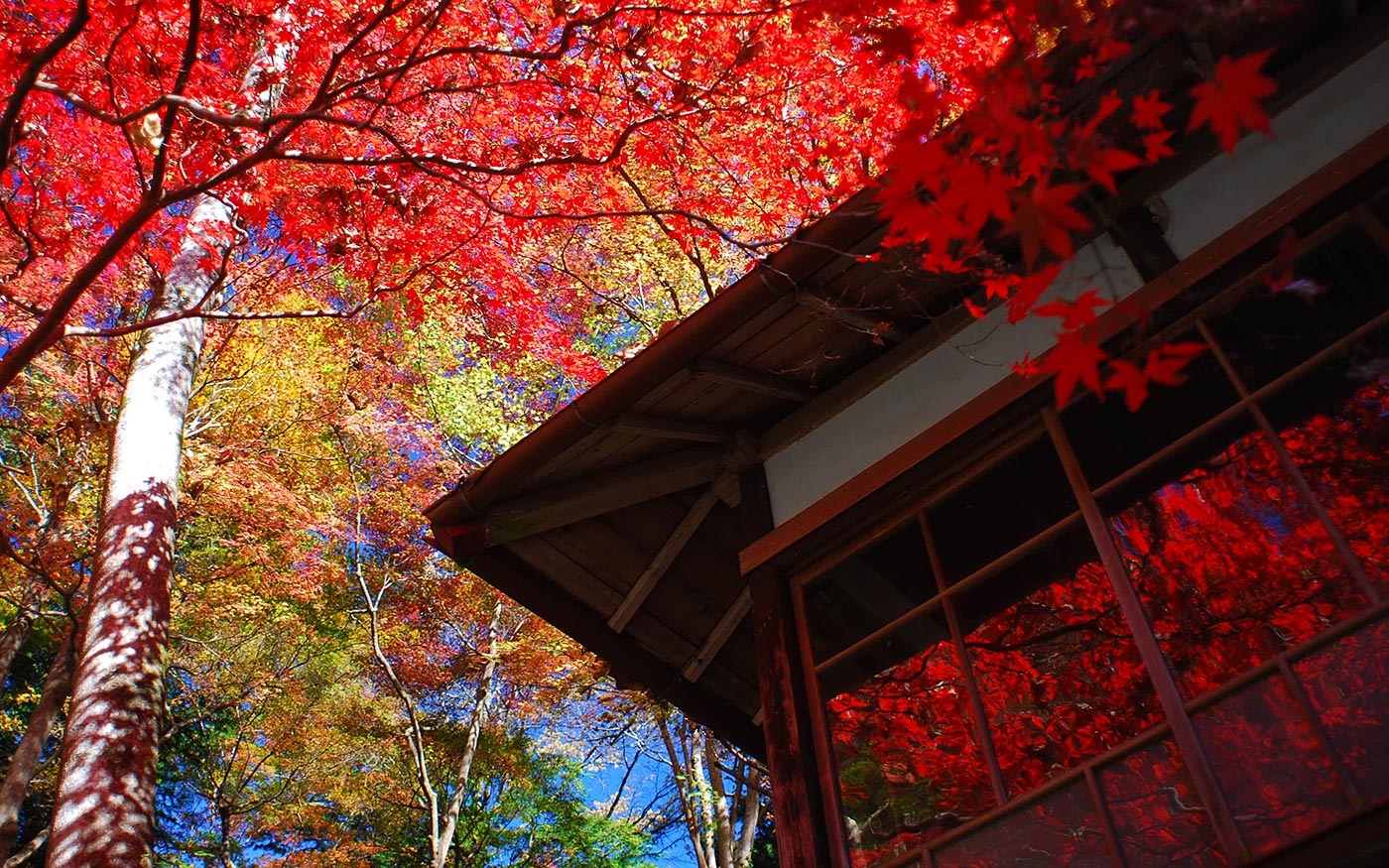
Translator: Shuji Ozaki Author: Toru Sasaki
